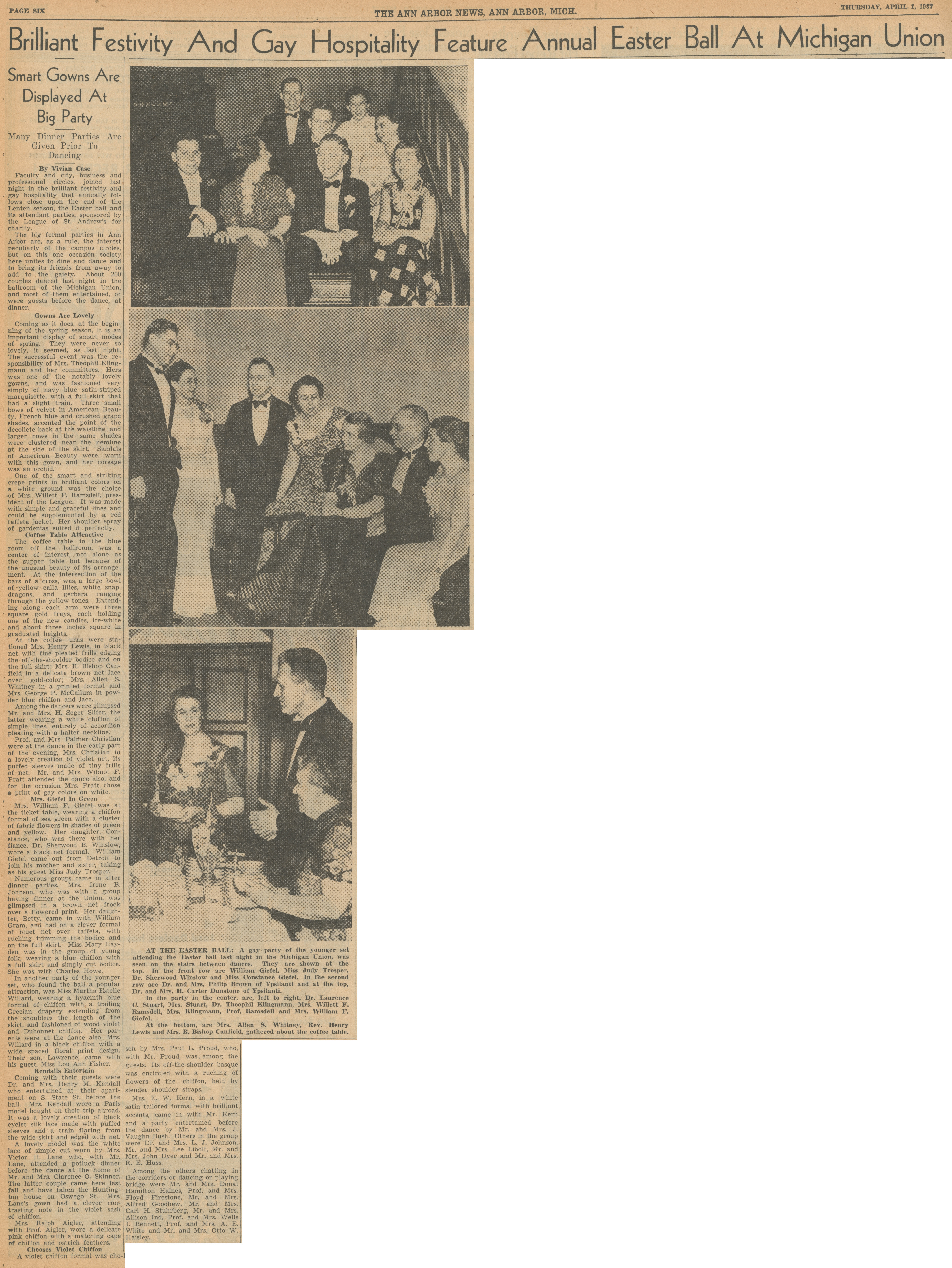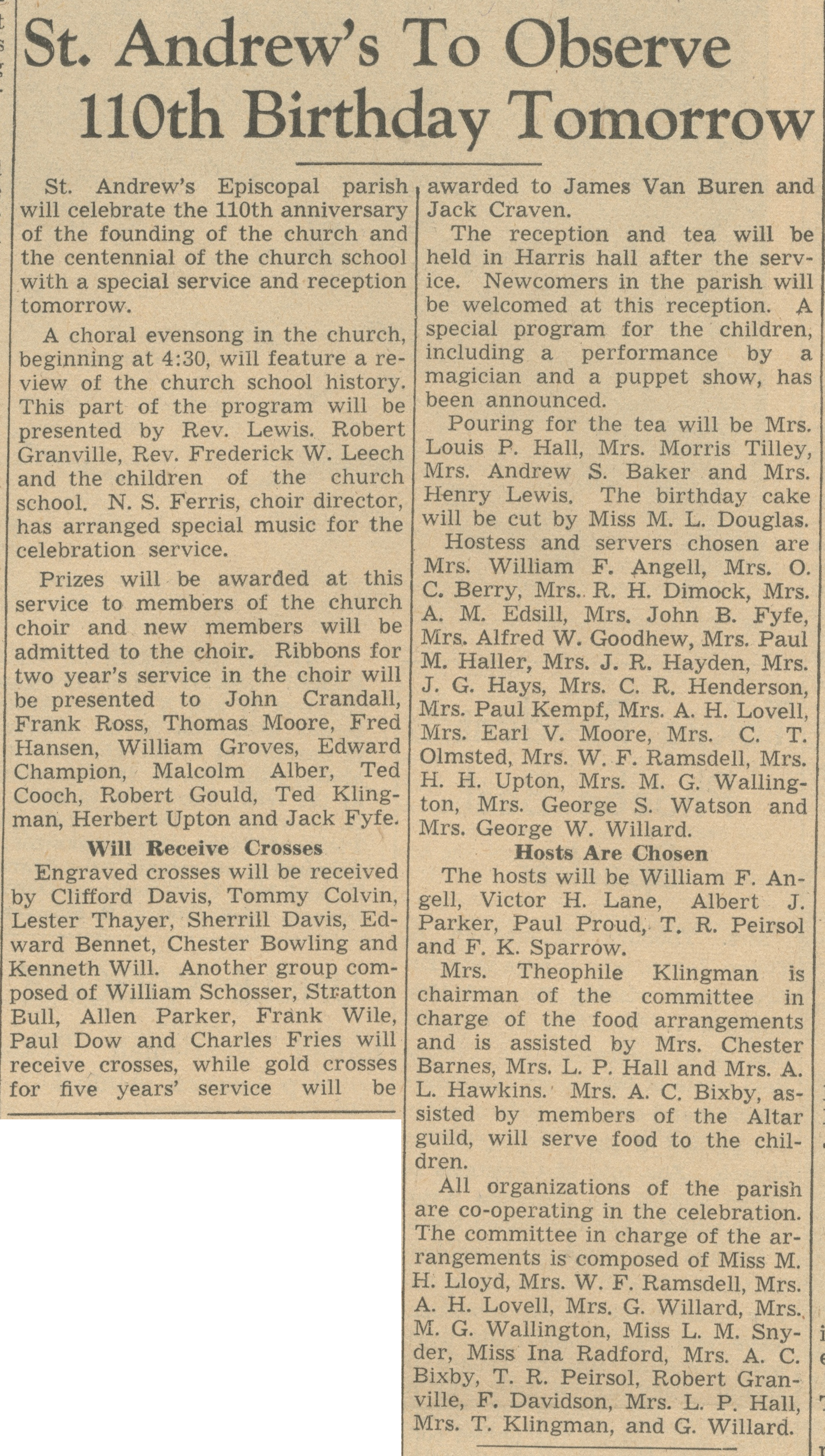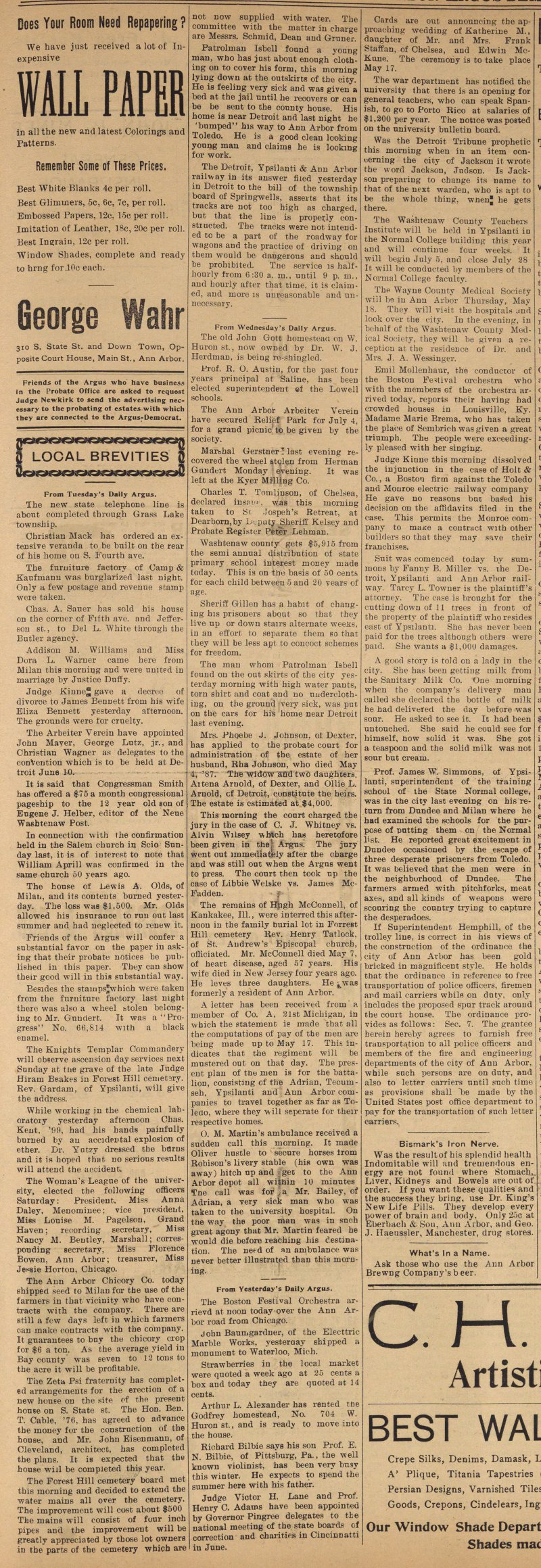Brilliant Festivity And Gay Hospitality Feature Annual Easter Ball At Michigan Union

Parent Issue
Day
1
Month
April
Year
1937
Copyright
Copyright Protected
St. Andrew's To Observe 110th Birthday Tomorrow

Parent Issue
Day
4
Month
December
Year
1937
Copyright
Copyright Protected
- Read more about St. Andrew's To Observe 110th Birthday Tomorrow
- Log in or register to post comments
Properties For Civic Play Are Varied And Many

Parent Issue
Day
3
Month
May
Year
1941
Copyright
Copyright Protected
- Read more about Properties For Civic Play Are Varied And Many
- Log in or register to post comments
Local

Parent Issue
Day
16
Month
May
Year
1888
Copyright
Public Domain
- Read more about Local
- Log in or register to post comments
Personals

Parent Issue
Day
9
Month
November
Year
1887
Copyright
Public Domain
- Read more about Personals
- Log in or register to post comments
Personals

Parent Issue
Day
29
Month
June
Year
1887
Copyright
Public Domain
- Read more about Personals
- Log in or register to post comments
Local Brevities

Parent Issue
Day
8
Month
September
Year
1899
Copyright
Public Domain
- Read more about Local Brevities
- Log in or register to post comments
E. J. Knowlton's Death

Parent Issue
Day
30
Month
June
Year
1899
Copyright
Public Domain
- Read more about E. J. Knowlton's Death
- Log in or register to post comments
Local Brevities

Parent Issue
Day
12
Month
May
Year
1899
Copyright
Public Domain
- Read more about Local Brevities
- Log in or register to post comments
Local Brevities

Parent Issue
Day
17
Month
February
Year
1899
Copyright
Public Domain
- Read more about Local Brevities
- Log in or register to post comments